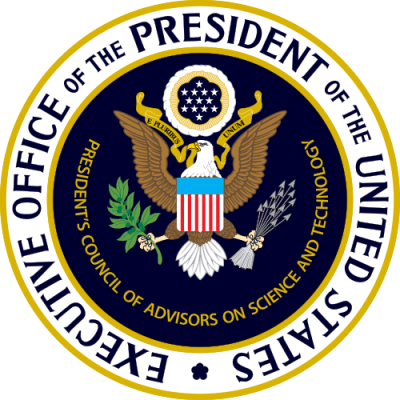
PCAST Report Offers Hope For Hearing Impaired Americans
Share
The President’s Council of Advisors on Science and Technology, (PCAST) was recently directed to evaluate why an estimated 30 million Americans with hearing loss do not seek the help they need to treat this growing problem. In September 2015, PCAST issued a report on their findings and it clearly demonstrates how "artificially inflated" hearing aid prices are the #1 barrier for a large percentage of Americans with hearing loss to avoid purchasing the hearing aids needed to help them to hear more clearly.
So how will this PCAST report affect Americans with hearing loss?
In addition to highlighting some of the obstacles faced by hearing aid consumers, the report also details several recommendations for the industry and the Federal Government that would ease regulations currently in place and help provide access to basic hearing aids for millions of Americans.
Here is a summary of the findings from the report: On the basis of statistics alone, it is apparent that age related hearing loss is indeed a growing national problem. Currently, a quarter of adults between 60 and 69 years, over half in the range 70-79 years, and almost 80 percent of those older than age 80 suffer from hearing loss – this accounts for nearly 30 million people in this country and that number is likely to grow as the population continues to get older. Therefore, it is a safe assumption that at some point most Americans will be forced to deal with some level of hearing loss.
These staggering numbers show that creating an affordable solution is no longer just a reality, but it has become a necessity. While concluding that the cost of hearing aids is the main factor that keeps people from purchasing the devices needed to alleviate the effects of hearing loss, PCAST identified several factors that contributed to their conclusion;
- The sales practices of bundling hearing aids with service costs that are common for local hearing centers and hearing care providers, make it difficult for consumers to shop for the best value.
- Only six companies manufacture the majority of hearing aids available in today's marketplace, and those manufacturers offer hearing care providers attractive incentives to offer only one brand of hearing aids to their patients, thus restricting their selection to only high-priced options.
- Manufacturers have less than $100 in component costs per hearing aid, yet a 2014 survey found that the average retail price of a premium hearing to be nearly $3,000 per hearing aid.
- Complex State and Federal regulations include components that restrict sales methods as well as limitations regarding who can sell hearing aids. This has the effect of further restricting patient and consumer selection and contributes to keeping prices artificially high.
- Medicare and most health insurance plans do not cover the cost of hearing aids, forcing consumers to pay out of pocket, which less than 30% of hearing impaired Americans are able to do. Since most people with age-related hearing loss develop binaural hearing loss that requires two hearing aids, it’s easy to see why treating hearing loss is a financial hardship for 75% of hearing impaired Americans.
While prices for most consumer electronic devices have come down due to modern innovations, hearing aid technology has not kept pace. Consumer Reports found an average of 120% mark-up on hearing aids with manufacturing costs making up less than half of average retail price of hearing aids.
After examining statistical evidence, the PCAST council concluded that non-surgical, basic hearing aids should be available over the counter and treated much the same as eyeglasses. By changing to OTC criteria, allowing self-diagnosis and hearing loss treatment with Personal Sound Amplifiers or “basic” hearing aids, the council members believe a huge barrier to Americans treating their hearing loss will be removed.
While the PCAST report on hearing aid technology did not advocate relaxing FDA regulations on the most advanced devices, the counsel found little evidence suggesting that premium hearing aids perform better than basic hearing aids.
Specific recommendations in the report are intended to make treating hearing loss more available to all Americans by:
- Amending FDA regulation to include a distinct category for over-the-counter (OTC) sale of “basic” hearing aids; defined as non-surgical, air-conduction hearing aids intended to address bilateral, gradual onset, mild-to-moderate age-related hearing loss and adopt distinct rules for such devices.
- Directing the FDA to define basic hearing aids as devices for discretionary consumer use intended to augment, improve, or extend the sense of hearing for hearing impaired Americans.
- Analogously to its “Eyeglass Rule,” the FTC should require audiologists and hearing-aid dispensers who perform standard diagnostic hearing tests and hearing aid fittings to provide the customer with a copy of their audiogram and the programmable audio profile for a hearing aid at no additional cost and in a standardized format used by all dispensers and hearing-aid vendors.
- Similarly, to effectively put in place its “Contact Lens Rule” for hearing aids, the FTC should define a process by which patients may authorize hearing-aid vendors (in-state or out-of-state) to obtain a copy of their hearing test results and programmable audio profile from any audiologist or hearing-aid dispenser who performs such a test, and it should require that the testers furnish such results at no additional cost.
In conclusion, it’s clear that while governmental red tape and manufacturer greed are substantial obstacles, being an informed consumer certainly offers solutions. The information contained within the PCAST report is the consumer’s best defense against the sales pressure of unscrupulous hearing aid providers. In addition, being able to compare costs and performance of all brands and models of hearing aids via the Internet gives consumers an effective tool to limit hearing aid costs as well. Research first, resist high-pressure sales, and make an informed hearing aid purchase for a happier, healthier life.
The full PCAST report can be viewed by clicking here;
PCAST report on the state of hearing aid technology
